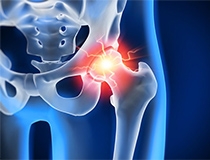Hip labral tears can sideline even the most active individuals, causing pain, stiffness, and limited range of motion. Traditionally treated with physical therapy or surgery, a growing number of patients are exploring less invasive options. Let’s look at how regenerative medicine is opening new doors for treating labral tears.
What Is a Hip Labral Tear?
The labrum is a ring of cartilage that lines the hip socket, helping to stabilize the joint and cushion movement. A tear in the labrum can result from trauma, repetitive stress (like running or squatting), or underlying structural issues such as femoroacetabular impingement (FAI). Symptoms may include groin pain, clicking or locking sensations, and stiffness during activity.
Traditional Treatment Options
Mild labral tears may respond well to conservative care such as rest, anti-inflammatory medications, physical therapy, and guided activity modification. However, when symptoms persist or worsen, surgical intervention—typically arthroscopic labral repair or reconstruction—is often recommended. While effective, surgery involves downtime, that may not fit with a patients desires or life situation.
How Regenerative Medicine Works
Regenerative medicine focuses on stimulating the body’s natural healing processes to decrease inflammation and increase tissue repair. Two of the most commonly used treatments for labral tears are:
- Platelet-Rich Plasma (PRP): Concentrated platelets from your own blood are injected into the damaged area to promote tissue healing and reduce inflammation.
- Cell Therapy: Specialized cells, often sourced from bone marrow or fat tissue, are injected into the joint to aid in healing and cartilage health.
These therapies are typically performed under ultrasound or fluoroscopic guidance for precision, often as outpatient procedures.
Can Regenerative Medicine Heal a Labral Tear?
While regenerative medicine may not fully “repair” a torn labrum in the way surgery can, it can significantly reduce pain and inflammation, improve joint function, and delay or prevent the need for surgery. Many active patients—especially those with mild to moderate tears—report improvement in symptoms and return to activity with little to no downtime.
Of note, outcomes can vary depending on the severity of the tear, the presence of other hip conditions, and overall patient health. A thorough evaluation by an orthopedic hip specialist is essential to determine whether regenerative therapy is a suitable option. If you’re dealing with ongoing hip pain from a labral tear but aren’t ready to consider surgery, regenerative medicine may be worth considering.
The American Hip Institute and Orthopedic Specialists specializes in advanced therapies that help preserve your joints and promote healing.
AUTHOR: Etan Sugarman, MD, is a board-certified, fellowship-trained orthopedic surgeon specializing in joint preservation and sports medicine. He has extensive expertise in minimally invasive techniques, complex primary procedures, and using the latest surgical technologies and biologics to improve outcomes and recovery. Prior to joining the American Hip Institute, Dr. Sugarman was a member of the Center for Regenerative Orthopaedic Medicine at Lenox Hill Hospital in New York City.
AUTHOR:Benjamin D. Kuhns, MD, MS, is a board-certified, fellowship-trained orthopedic surgeon specializing in the comprehensive management of adult hip pain. Dr. Kuhns offers a full spectrum of care, from non-operative treatments—including hip-specific physical therapy, medication management, and targeted injections—to advanced surgical solutions. His surgical expertise includes complex primary and revision hip arthroscopy, open hip preservation procedures such as periacetabular and proximal femoral osteotomies, and robotic-assisted anterior total hip replacement.


 Thanks a lot for getting my hip right. Looking forward to a full recovery and a great season. Thanks again for everything.
Thanks a lot for getting my hip right. Looking forward to a full recovery and a great season. Thanks again for everything.










